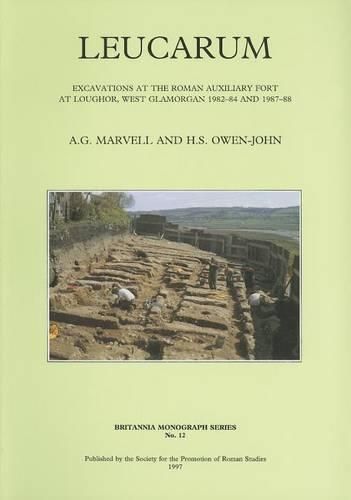Readings Newsletter
Become a Readings Member to make your shopping experience even easier.
Sign in or sign up for free!
You’re not far away from qualifying for FREE standard shipping within Australia
You’ve qualified for FREE standard shipping within Australia
The cart is loading…






The Roman fort at Loughor was founded in c75 AD and occupied continuously until the early 120s. It was then reduced, used sporadically until c150-160 and occupied again from c270 until the early-4th century. Excavation was concentrated on the defences and part of the interior. Examination of the defences has allowed construction methods and metrication to be reviewed. In the interior of the Flavio-Trajani fort, a sequence of granaries, the last associated with charred grain, was followed by a series of four praetoria. Analysis of the data from these buildings has allowed a reconsideration of the form and function of Commander’s Houses in auxiliary forts. Full reports are provided on: coins (S.H. Sell), copper-alloy and silver (G. Lloyd-Morgan), ironwork (M. Dawson), dagger scabbard (I. Scott), lead (D.R. Evans), samian (B. Dickinson), mortaria (K.F. Hartley), amphorae (D.R. Evans), coarse pottery (P.V. Webster), lamps (D. Bailey), wall plaster (A.G. Marvell), brick and tile (E.M. Evans), glass (D. Allen), intaglios (M. Henig), skeletal remains (J.L. Wilkinson), grain (F. Probert), faunal remains (P. Sadler), worked bone (S. Greep) and stone (J. Parkhouse).
$9.00 standard shipping within Australia
FREE standard shipping within Australia for orders over $100.00
Express & International shipping calculated at checkout
The Roman fort at Loughor was founded in c75 AD and occupied continuously until the early 120s. It was then reduced, used sporadically until c150-160 and occupied again from c270 until the early-4th century. Excavation was concentrated on the defences and part of the interior. Examination of the defences has allowed construction methods and metrication to be reviewed. In the interior of the Flavio-Trajani fort, a sequence of granaries, the last associated with charred grain, was followed by a series of four praetoria. Analysis of the data from these buildings has allowed a reconsideration of the form and function of Commander’s Houses in auxiliary forts. Full reports are provided on: coins (S.H. Sell), copper-alloy and silver (G. Lloyd-Morgan), ironwork (M. Dawson), dagger scabbard (I. Scott), lead (D.R. Evans), samian (B. Dickinson), mortaria (K.F. Hartley), amphorae (D.R. Evans), coarse pottery (P.V. Webster), lamps (D. Bailey), wall plaster (A.G. Marvell), brick and tile (E.M. Evans), glass (D. Allen), intaglios (M. Henig), skeletal remains (J.L. Wilkinson), grain (F. Probert), faunal remains (P. Sadler), worked bone (S. Greep) and stone (J. Parkhouse).